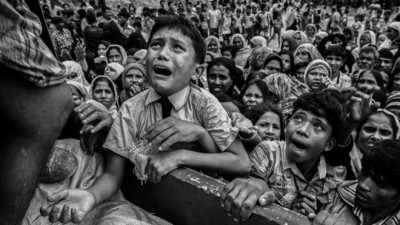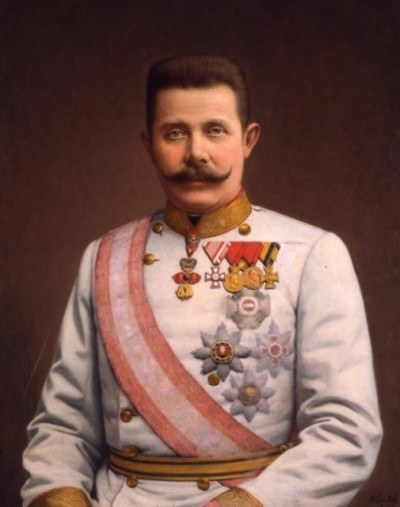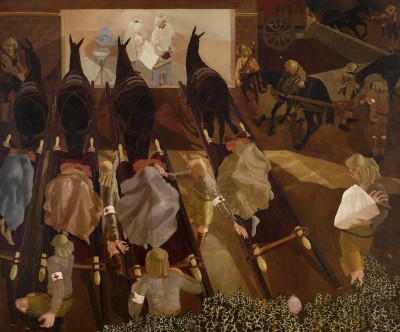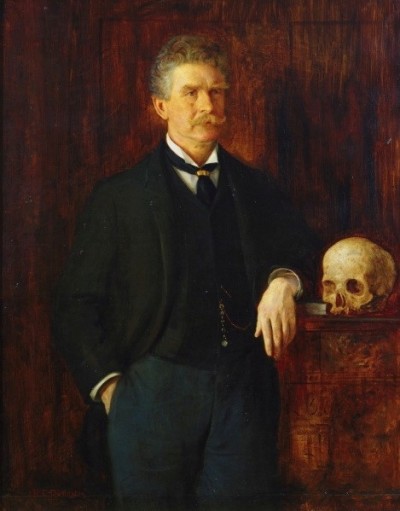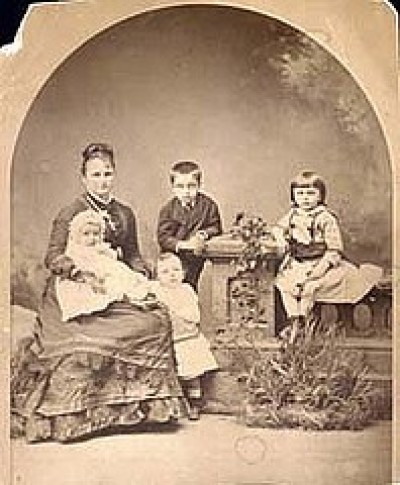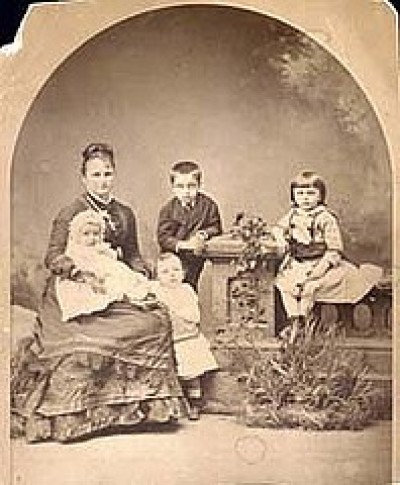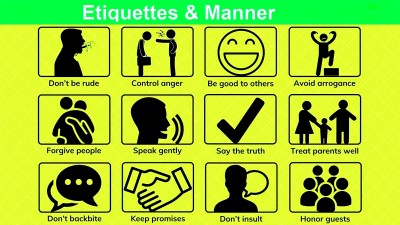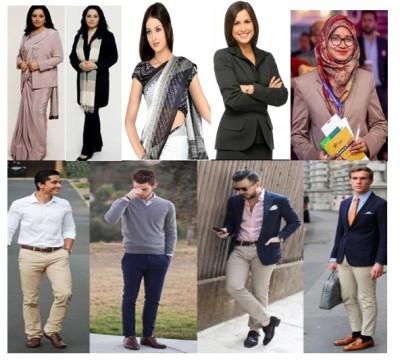Course description
The Rohingya – “one of, if not the, most discriminated people in the world"
Those words were used by UN Secretary-General Antonio Guterres, to describe the Rohingya a couple of years ago. He was not using them lightly. According to the United Nations High Commission for Refugees, 723,000 people have fled from Arakan Province in Burma since August, 2017, into Bangladesh. Sheikh Hasina has even put the number of Rohingya refugees living in or near Cox’s Bazar at 1.1 million.
 Conditions in the camps are dreadful. They are overcrowded, lack fresh running water and reasonable living standards, including access to health care and education. The Bangladeshi government only allows children of primary school age to study in the country; older children and young adults who should be in secondary education or at university are not allowed to follow either the Myanmar or Bangladesh curriculum. The Government of Bangladesh is worried that, if they attend schools or follow courses here, they will not wish to return to Burma. The newspapers are also full of stories – many motivated by racism – about the import of drugs like yaba, marijuana and others to Bangladesh (although how this is possible when the Rohingya are afraid of returning to Burma is never explained). Anyway, there can be no doubt that the Bangladesh authorities and people see the refugees as unwelcome guests. And, of course, the Burmese have shown again and again that they do not regard them as citizens or want them back within their borders.
Conditions in the camps are dreadful. They are overcrowded, lack fresh running water and reasonable living standards, including access to health care and education. The Bangladeshi government only allows children of primary school age to study in the country; older children and young adults who should be in secondary education or at university are not allowed to follow either the Myanmar or Bangladesh curriculum. The Government of Bangladesh is worried that, if they attend schools or follow courses here, they will not wish to return to Burma. The newspapers are also full of stories – many motivated by racism – about the import of drugs like yaba, marijuana and others to Bangladesh (although how this is possible when the Rohingya are afraid of returning to Burma is never explained). Anyway, there can be no doubt that the Bangladesh authorities and people see the refugees as unwelcome guests. And, of course, the Burmese have shown again and again that they do not regard them as citizens or want them back within their borders.
 But, if you think that this crisis has happened suddenly, you are very wrong. The identity of the Rohingya – even the name itself – has been in doubt for centuries. The term Rohingya was used before the British Indian Empire. In 1799, Francis Buchanan included “Rooinga” to describe “Mohammedans who have long settled in Arakan” in an article on Burmese languages. However, according to Jacques Leider, a modern historian of the area, the Rohingya were called "Chittagonians" during British colonial times, and it was even usual to call them "Bengalis" until the 1990s. Leider believes ‘Rohingya’ is a name linked to a political movement starting in the 1950s to call for "a Muslim zone with decision-making powers" in Rakhine. Still, after Burma achieved independence in 1948, the first Prime Minister of the country, U Nu, used the word as one that could unify the Burmese people near the East Pakistan border.
But, if you think that this crisis has happened suddenly, you are very wrong. The identity of the Rohingya – even the name itself – has been in doubt for centuries. The term Rohingya was used before the British Indian Empire. In 1799, Francis Buchanan included “Rooinga” to describe “Mohammedans who have long settled in Arakan” in an article on Burmese languages. However, according to Jacques Leider, a modern historian of the area, the Rohingya were called "Chittagonians" during British colonial times, and it was even usual to call them "Bengalis" until the 1990s. Leider believes ‘Rohingya’ is a name linked to a political movement starting in the 1950s to call for "a Muslim zone with decision-making powers" in Rakhine. Still, after Burma achieved independence in 1948, the first Prime Minister of the country, U Nu, used the word as one that could unify the Burmese people near the East Pakistan border.
Whatever the politics of the term before, its use now divides people. The government of Myanmar has not used it since the troubles began and, in the 2014 census, people were forced to identify themselves as “Bengali”.
But it is not just a word that separates people. There is no agreement on who first lived in Arakan. Ancient Arakanese documents state that there were Buddhists living in and ruling the area 5,000 years ago, while Sanskrit ones say that Hindus were the first inhabitants. The British historian, Daniel Hall, believed that the Burmese did not arrive until the tenth century after Christ, making the original local people Indian. We also know that Arab traders were regular visitors as long ago as the third century and, around 788, the first Arab Muslims settled in Arakan, importing Islam, converting and even marrying locals until Islam had a permanent place. Yet, this does not mean that Muslim identity was typical of the region as there are also records of early contacts with the Buddhist Mauryan Empire from Bengal.
 Whoever was in Arakan first, what is sure is that King Mrauk U was forced out of Arakan in 1406 and managed to escape to Bengal, from where – after nearly a quarter of a century – he attacked and conquered his homeland in 1430 with Bengali Muslim support. Yet, it was these Muslim soldiers who accompanied King Mrauk U that were given land and set up homes there. Arakan became a colony of Muslim Bengal, used Bengali coins and paid taxes to the Sultan. Even after the death of Sultan Jalaluddin Mohammed Shah in 1433 and the invasion of Chittagong by Arakenese soldiers, the Arakans continued to use Muslim titles (like ‘Sultan’), employ Muslims in their governments and copy the rulers of the Sultanate – right up to 1666, when they were forced out of Chittagong after a two-century stay.
Whoever was in Arakan first, what is sure is that King Mrauk U was forced out of Arakan in 1406 and managed to escape to Bengal, from where – after nearly a quarter of a century – he attacked and conquered his homeland in 1430 with Bengali Muslim support. Yet, it was these Muslim soldiers who accompanied King Mrauk U that were given land and set up homes there. Arakan became a colony of Muslim Bengal, used Bengali coins and paid taxes to the Sultan. Even after the death of Sultan Jalaluddin Mohammed Shah in 1433 and the invasion of Chittagong by Arakenese soldiers, the Arakans continued to use Muslim titles (like ‘Sultan’), employ Muslims in their governments and copy the rulers of the Sultanate – right up to 1666, when they were forced out of Chittagong after a two-century stay.
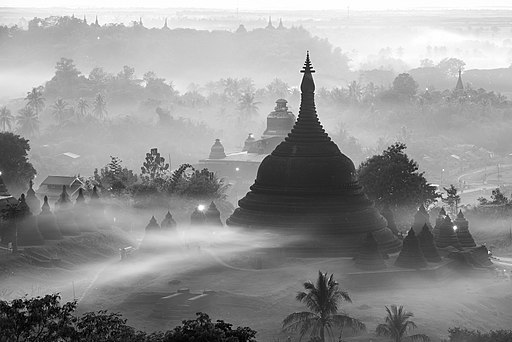 In fact, it was this closeness between the Bengalis and Arakans that eventually led to the Emperor Aurangzeb punishing the small kingdom. Prince Shah Shuja, the Governor of Bengal and brother of the Emperor, raised arms against him at the Battle of Kajwa in 1660. He lost and Shuja only just managed to escape to Arakan and ask for protection… which he got, but his powerful brother sent the next Governor of Bengal, Shaista Khan to attack in 1666, seizing Chittagong from the Burmese and making the northern part of Arakan a colony.
In fact, it was this closeness between the Bengalis and Arakans that eventually led to the Emperor Aurangzeb punishing the small kingdom. Prince Shah Shuja, the Governor of Bengal and brother of the Emperor, raised arms against him at the Battle of Kajwa in 1660. He lost and Shuja only just managed to escape to Arakan and ask for protection… which he got, but his powerful brother sent the next Governor of Bengal, Shaista Khan to attack in 1666, seizing Chittagong from the Burmese and making the northern part of Arakan a colony.
120 years later, in 1785, the Burmese Konbaung Dynasty conquered Arakan and executed thousands of Muslims, many more of whom rushed to the protection of the British Raj in Chittagong. The Burmese invasion was short-lived because the British occupied it and, almost immediately, populated it with Bengali Muslims to farm the rich soil. This continued throughout the 19th century, so that it was hard to know which of the Muslim settlers had historic roots in Arakan and which were there for financial benefits. Whatever the case, this mass migration was hated by the local Buddhist Arakanese who believed their ancient land and customs were lost. In the 1930s, there were serious and very violent riots against these ‘Bengali’ Muslims living on Arakan land.
When the Japanese invaded in the Second World War (1939-45), the local Buddhist Arakanese supported them, while the Muslims were in favour of the British. Both world powers armed their supporters but the guns were more often used against locals than their imperial masters.
Things did not stop there though. After the Second World War came to an end in 1945 and the independence of Pakistan two years later, Muslim Arakanese asked Mohammad Ali Jinnah, leader of the new state, to accept Arakan into East Bengal. They were worried about their future in an independent and Buddhist Burma. The British too were concerned about a nationalist Buddhist government. However, the plan never became a reality because Jinnah said he could not interfere in the internal affairs of Burma.
 In fact, when Burma did become independent in 1948, the policies of Prime Minister U Nu were friendly towards the Muslim minority. In 1954, for instance, he gave a speech where he praised the loyalty of the Burmese Muslims to their Buddhist government. He even used the word ‘Rohingya’ to describe them.
In fact, when Burma did become independent in 1948, the policies of Prime Minister U Nu were friendly towards the Muslim minority. In 1954, for instance, he gave a speech where he praised the loyalty of the Burmese Muslims to their Buddhist government. He even used the word ‘Rohingya’ to describe them.
Yet, in 1962, the military under the leadership of General Ne Win, seized power and the security of Burmese Muslims was again in doubt. Racism towards “Indian” people became part of the nationalist agenda. The military government nationalized all property, including many businesses owned by the Burmese Indian community. Between 1962 and 1964, 320,000 Burmese Indians were forced to leave the country.
In 1978, Operation King Dragon was launched to distinguish Burmese nationals from foreigners. This was the first major organised attack on the Rohingya. National Registration Cards (NRC) were taken away by civil servants and never replaced. The violence forced 200,000 Rohingya to flee to Bangladesh, but this country refused the refugees entry and blocked food supplies, leading to the deaths of 12,000 of them. The Bangladesh government protested about "the expulsion by force of thousands of Burmese Muslim citizens to Bangladesh". The Burmese government replied that those expelled were Bangladesh citizens who were living illegally in Burma. In July 1978, after negotiations with the UN, Ne Win's government agreed to take back 200,000 refugees who settled in Arakan. In the same year as well as in 1992, a joint statement by the governments of Myanmar and Bangladesh "acknowledged that the Rohingya were lawful Burmese residents”.
 Yet, in 1982, a new citizenship law did not list the Rohingya as one of the 135 "national races" of Burma and called these “Bengalis” “foreigners”. This made the Rohingya population stateless in their homeland of Arakan. In 1989, the generals officially changed the name of Burma to Myanmar and, a few years later, Arakan became Rakhine, a name linked to Buddhists in the area.
Yet, in 1982, a new citizenship law did not list the Rohingya as one of the 135 "national races" of Burma and called these “Bengalis” “foreigners”. This made the Rohingya population stateless in their homeland of Arakan. In 1989, the generals officially changed the name of Burma to Myanmar and, a few years later, Arakan became Rakhine, a name linked to Buddhists in the area.
In 2012, Rakhine State saw riots encouraged by the Burmese government asking Rakhine men to defend their "race and religion". On both sides, entire villages were completely destroyed and thousands lost their lives. In 2017, the current crisis which has displaced nearly a million Rohingya and forced them into ‘temporary’ camps in and around Cox’s Bazar, erupted. The United Nations has called this “a textbook example of ethnic cleansing”. In 2020, the U.N.’s top court demanded that the Burmese government should protect its Rohingya minority but the Army and new democratic government answer that they are only fighting to defeat terrorists and civilians are not harmed. Even the Nobel Peace Prize-winning Aung San Suu Kyi, previously the darling of freedom fighters the world over, has defended the Burmese government, rejecting allegations that the Rohingya are targeted and attacked.
 Meanwhile Rohingya refugees continue to arrive in Bangladesh, telling stories of the murders even of children, stories which are supported by NGOs. Although an agreement was reached between Bangladesh and Myanmar in 2018, the refugees do not believe they will be safe if they return to Arakan. After all, discrimination against the group is now the norm. There are restrictions on marriage, family planning, employment, education, religious choice, and freedom of movement. For example, Rohingya couples in the northern towns of Maungdaw and Buthidaung are only allowed to have two children. Rohingya must also get permission to marry, which may require them to bribe authorities and provide photographs of the bride without a headscarf and the groom with a clean-shaven face. To move to a new home or travel outside their towns, Rohingya must get government agreement. There is no Rohingya Member of Parliament in Myanmar, in fact no Muslim MP at all.
Meanwhile Rohingya refugees continue to arrive in Bangladesh, telling stories of the murders even of children, stories which are supported by NGOs. Although an agreement was reached between Bangladesh and Myanmar in 2018, the refugees do not believe they will be safe if they return to Arakan. After all, discrimination against the group is now the norm. There are restrictions on marriage, family planning, employment, education, religious choice, and freedom of movement. For example, Rohingya couples in the northern towns of Maungdaw and Buthidaung are only allowed to have two children. Rohingya must also get permission to marry, which may require them to bribe authorities and provide photographs of the bride without a headscarf and the groom with a clean-shaven face. To move to a new home or travel outside their towns, Rohingya must get government agreement. There is no Rohingya Member of Parliament in Myanmar, in fact no Muslim MP at all.
In such circumstances, how can the Rohingya feel safe at home in Arakan? Yet, in Bangladesh, the government refuses Rohingya children above the age of 12 any education. There is no employment either but a very great deal of anger against the refugees shown by the local population in Cox’s Bazar! The Rohingya truly are “one of, if not the, most discriminated people in the world”.
If you want to watch some videos on this topic, you can click on the links to YouTube videos below.
If you want to answer questions on this article to test how much you understand, you can click on the green box: Finished Reading?
Videos:
1. The Rohingya Crisis explained (07:11)
2. Rohingya History in Chronological Order (05:27)
3. Inside a Rohingya Refugee Camp In Bangladesh: Ground Report (12:20)
4. Bangladesh: Rohingya Migrant Crisis (06:00)
5. Inside the Rohingya Refugee Crisis (03:59)
6. Operation King Dragon (01:20)
7. Aung San Suu Kyi Defends Mayanmar Against Rohingya Genocide Accusations (09:32)

 Conditions in the camps are
Conditions in the camps are But, if you think that this crisis has happened suddenly, you are very wrong. The identity of the Rohingya – even the name itself – has been
But, if you think that this crisis has happened suddenly, you are very wrong. The identity of the Rohingya – even the name itself – has been 

 In fact, when Burma did become independent in 1948, the policies of Prime Minister U Nu were friendly towards the Muslim minority. In 1954, for instance, he gave a speech where he praised the
In fact, when Burma did become independent in 1948, the policies of Prime Minister U Nu were friendly towards the Muslim minority. In 1954, for instance, he gave a speech where he praised the  Yet, in 1982, a new citizenship law did not list the Rohingya as one of the 135 "national races" of Burma and called these “Bengalis” “foreigners”. This made the Rohingya population stateless in their homeland of Arakan. In 1989, the generals officially changed the name of Burma to Myanmar and, a few years later, Arakan became Rakhine, a name linked to Buddhists in the area.
Yet, in 1982, a new citizenship law did not list the Rohingya as one of the 135 "national races" of Burma and called these “Bengalis” “foreigners”. This made the Rohingya population stateless in their homeland of Arakan. In 1989, the generals officially changed the name of Burma to Myanmar and, a few years later, Arakan became Rakhine, a name linked to Buddhists in the area. Meanwhile Rohingya refugees continue to arrive in Bangladesh, telling stories of the murders even of children, stories which are supported by NGOs. Although an agreement was reached between Bangladesh and Myanmar in 2018, the refugees do not believe they will be safe if they return to Arakan. After all,
Meanwhile Rohingya refugees continue to arrive in Bangladesh, telling stories of the murders even of children, stories which are supported by NGOs. Although an agreement was reached between Bangladesh and Myanmar in 2018, the refugees do not believe they will be safe if they return to Arakan. After all, 